Volvo Ocean Race - a year (ish) to go
Just under a year to go now until the start of the Volvo Ocean Race and the moment is opportune for the round the world race’s CEO Knut Frostad to give us an update on how his event is progressing...
At present six teams are fully funded and rearing to go with new builds well under way. These include:
- Franck Cammas’ Groupama with a new Juan K design
- Ken Read returning for a second crack with Puma again with a Juan K design
- two as yet unnamed teams that may or may not be backed by Telefonica, one with a new Juan K design, which may be skippered by Iker Martinez with Neal MacDonald as watch leader, the other possibly taking one of the existing Telefonica boats
- Camper, ‘powered by Emirates Team New Zealand’ with Chris Nicholson as skipper and a design from Botin & Carkeek
- Abu Dhabi, skippered by Ian Walker and designed by Farr Yacht Design
Then there are four more teams, looking to compete in existing boats, which Frostad says they are supporting on a day to day basis. While their details aren’t public, they include an Italian team with Ericsson 3 and another looking to take Green Dragon.
“Then behind that there are seven more teams working on it in different ways,” continues Frostad. “One of them that we don’t know much about, but we think is making progress. Normally if there are teams that you don’t know much it can be a good sign.” Basically any more than six teams in total he he views as a bonus.
Among all these there is believed to be another women’s team, possibly the second 'Telefonica' boat.
Frostad admits he would have liked there to be more teams signed up by now, but in fact they are exactly where they were at the same stage prior to the last Volvo Ocean Race. “It is no secret that the economic downturn has had a big impact on the sponsorship market. In that respect knowing that the last race was sold in the probably best market ever, it is not too bad. We did the numbers the other day and realised that if you include all the sponsorship that has been raised by the teams we know to date and the sponsor and rights fees we have raised, then we have raised more than 200 million Euros at this stage. I don’t think many other events, at least not in sailing, have raised that in the last 18 months, because 2009 was an incredibly tough market. The majority of big brands in sponsorship didn’t even reduce their spending, they just stopped. Now it has started to ease off. So considering the marketplace, I am actually quite pleased, because we have some good brands.”
Frostad also is pleased with a new development among the VOR sponsors this time: most are consumer brands, whereas last time it was pretty much only Puma. “That is positive for us because those brand help drive the sport in the right direction.”
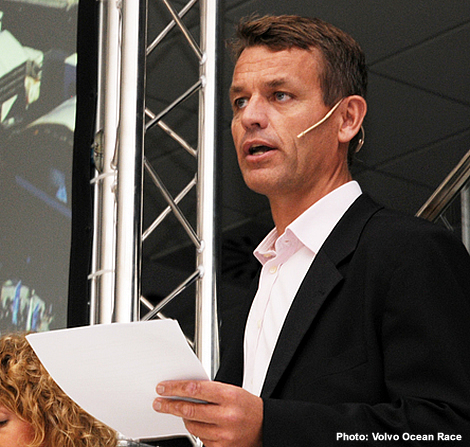
No clear winner
Perhaps best for the race is that thanks to the rule changes Frostad reckons that there are five potential winners this time around. Groupama perhaps had the earliest start and have had the benefit of acquiring the winner from the last race, Ericsson 4. But this time there is no two boat testing, teams can’t build two boat, sails are limited as are daggerboards and rudder. “Everyone pretty much is going to do the same thing. It is going to be very much up to the guys on board.”
This is further helped by there being more than one team competing in a Juan Kouyoumdjian design. Whether these will be dominant remains to be seen though. Botin & Carkeek came second in the last race with Puma's il mostro, their first attempt at a VOR70 and will have learned. This time they have the added might of the Emirates Team New Zealand design team working on the Camper project too. “At the same time Bruce Farr is very keen on revenge and coming back strongly with Ian Walker. I know that they are all working very very hard to get a top team,” says Frostad, who reckons that there could be some significant differences between the designs this time.
Frostad makes the observation that Ericsson 4’s dominance in the last Volvo Ocean Race wasn’t just due to her design, but her having had the best preparation. “That was a much bigger difference than you could possibly get in this next race. Just the fact that if you eliminate two boat testing means that yes, you can do some more sailing than other teams, but you don’t get the same value of an early start that they did.”
In addition, the new rule changes will mean that the older boats will be more competitive with the new builds than they have ever been before. “The two Ericsson boats, Puma and even the two Telefonica boats we know can be competitive,” continues Frostad. “It is a question of where the new boats end up in the box – do they all go maximum stability and very powerful hull forms and take a penalty in the light conditions?” He cites the example of Telefonica Blue, a very fast boat in light conditions and in the in-port races last time, which could still be a weapon in the right environment in the right hands.
Rule change success
Following the sweeping changes introduced for the next Volvo Ocean Race, Frostad reckons they have been more successful in cost capping than cost reduction. “What I mean by that is that the cost of winning the VOR has clearly gone down. You can always spend more money if you really want to, but as you not allowed two boat test, or build two boats, only allowed to build a very limited number of sails, daggerboards and rudders, you don’t get that much benefit spending more money.” He hopes that this has levelled the playing field so that a small budget team will end up building, for example, the same number of sails as a big team – around 15 compared to the <100 the lead teams built last time.
Campaign budgets this time around he reckons will be in the 10-25 million € region, the difference coming in building new or not, salaries, size of the staff, the duration the project runs for, etc.
So if one acquired Ericsson 4 (Groupama have it for sale) what would one need to do to it? Not very much, according to Frostad. “The rule is designed for you to keep the advantage of the extra weight you have in the bulb. There is a new rule on the daggerboards. You are not allowed twisting daggerboards which the Ericssons had in the last race. So you’d have to change the daggerboards. There could be some small quick fixes that you’d do from experience in the last race. The biggest change from the last event is you’d focus on the sails, because the new sail inventory is smaller so you will have to think differently.”
Ports
The Volvo Ocean Race has just held a major meeting in Alicante for those organising all the stopovers. To recap, the course this time runs from Alicante, Spain, to Cape Town, then up the Indian Ocean and into the Gulf to Abu Dhabi, then across to Asia and Sanya in China, down to New Zealand, Itajal in southern Brazil, up to Miami, across the Atlantic to Lisbon, then back out into the Atlantic rounding the Azores to the French stopover in Lorient before the final sprint to Galway.
“With the ports we are well down the road,” says Frostad. “We started this process earlier than the last race, which is key to developing the race, so the ports have plenty of time to prepare and learn from successful ports in the last race.” He points out that with the return of Auckland and the introduction of Lorient, they are visiting two venues with deep roots in the traditional sailing world. In Auckland the boats will be berthed in what remains of the Viaduct Basin, while in Lorient they will be on pontoons by the submarine silos.
Nippers
For the next race the under 30s in the crew are increasing from two to three. While there were few of under 30s from the 2005-6 Volvo Ocean Race completing last time, this looks set to be different for the next race. “It is a good sign that the young people who are being recruited are staying on and becoming very good sailors.” We point out that this may be because they are cheaper, but Frostad retorts that if you look at the last races none of the under 30s were ever swapped out. “They work hard and they do a good job on board - that is the feedback I got from the skippers. Those guys become invaluable to the team.”
Comms
At the Ports meeting, those who attended got to see the brand new Volvo Ocean Race control room. At their old base in the UK in Whiteley they had something similar, but that was really only used for the duty officers. The new control room has been geared up to be much more media friendly.
“The technology behind it and the set-up of it is to interact much more directly with the boats and the media crew members,” says Frostad. Rick Deppe, former Puma media crewman from the last race has been recruited to effectively stay in the control room and be liaison between the boats and the outside work.
“The race control is really the hub because as we are a sport that people can’t physically watch, apart from the starts, finishes and in-port races, we have to make sure that that technology is outstanding. So we set it up very differently. We have in this race control room the ability to connect with any boat at any given time. Obviously if we see a story building, if we have a big storm arriving, we can start to connect to the boats, we can see the weather and overlay that and see who is closest to the storm, and then talk to those guys.”
Frostad says that they are still contemplating the single most successful communications entity from French events such as the Vendee Globe and Route du Rhum – the ‘radio vacation’, where skippers are called one by one, and get to speak to an ‘expert panel’ back on terra firma, thereby generating content which today, with the advent of video conferencing, can feed all the media from TV, to radio, internet, newspapers, etc.
They are also upgrading the television technology carried on the boat. Last time the boats carried HD cameras but this proved a nightmare to edit on board. At present they are looking at this once again and whether or not they should go a step further and record the 2011-12 Volvo Ocean Race in 3D.
Volvo Ocean Race Legends Regatta
To coincide with the opening of the Volvo Ocean Race museum in Alicante, back in July this event was announced as a event gathering as many past boats and competitors in the Whitbread Round the World Race and Volvo Ocean Race.
“It is coming on very well. We are getting entries coming in every week,” says Frostad. “It gives me a chance to do a race or two as well! We have had really positive feedback from old sailors who are coming.”
As this remains some way off it is hard to say how many boats will take part but Frostad says that if they have 15 boats it would be fantatic. “At the moment we are on track for that. Just to have all the sailors here would be a lot of fun.”
The format of the race has yet to be decided. Typically they will be day races, but this seems a little wimpy for these hardy round the world vessels and at least an overnight should be included in the race schedule. Frostad says that if there is enough take up he would like to have separate starts for each past race. “There is obviously a big social aspect to this, more than the competitive side, but some are clearly competitive. I have been getting emails about rules and stuff!”
In addition to the veterans, Frostad says they are also looking at staging a youth sailing event in the ports the weekend before each leg starts. “It is going to be an event for active youth sailors from that region, as a race.” In addition throughout each stopover they plan to set up a sailing school for those new to sailing.
Looking forwards
While Frostad and his team carried out a major study of their event during the last race to nail down ways they could both cut and cap costs for the next event he says they are going to continue this work but from a different angle.
“We are going to look at what do we really want the event to be? What is the fair and realistic sponsorship budget, where the sponsors have a return on investment, so that it includes more potential companies to get involved. Based on that budget we will have to look again at the boat, the class, the technology, the route, the sails and all of this. And we won’t rule out anything. It is not necessarily a monohull-multihull discussion, but it is an important discussion for us and we will have this discussion starting this year.”
Given that the America’s Cup has gone multihull, one wonders if Frostad won’t be tempted down a similar route.
More racing
While it has been mooted on several occasions over the past decades, the period between the next Volvo Ocean Races also represents the best opportunity yet for Volvo to hold some races in between laps of the planet. This is due to several of the teams – Groupama, Abu Dhabi and possibly Camper - committing for more than one race. Frostad says they contemplated that for this year but opted against since the marketplace had been so horrible in 2009 and the teams weren’t able to get up and running fast enough. He is currently looking at 2013.
“It is a big change for us to get teams which plan to do more than one event. It is probably as simple as us as an organiser being more committed long term. Now everyone knows that at least the next three VORs are going to happen from Alicante and it will start here and that gives people the confidence that it is sustainable in the long term.”
The commitment from these teams to compete in two races also works as a more cost-effectively proposal for the sponsors involved for competing twice, doesn’t cost twice as much as racing once as for their second attempt they have a training boat and don’t have to set up the infrastructure of their team. “Also importantly, the sponsors get better at it. They learn and they improve,” says Frostad.

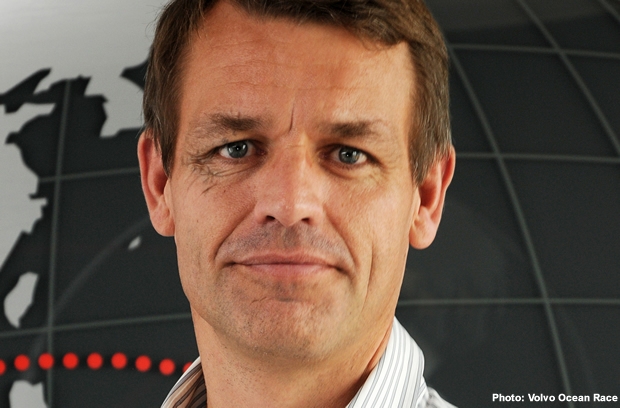
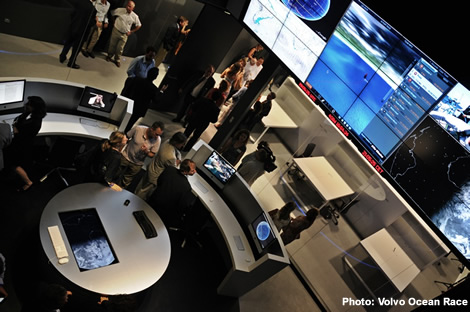
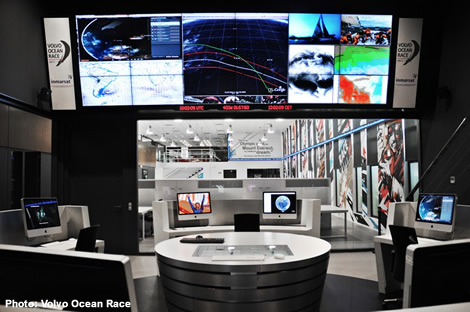
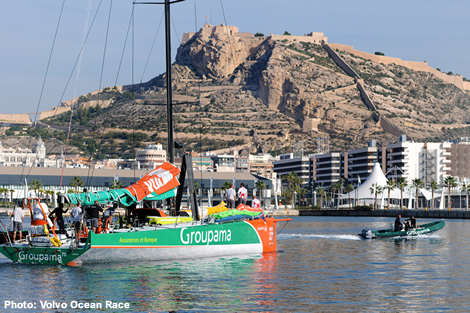
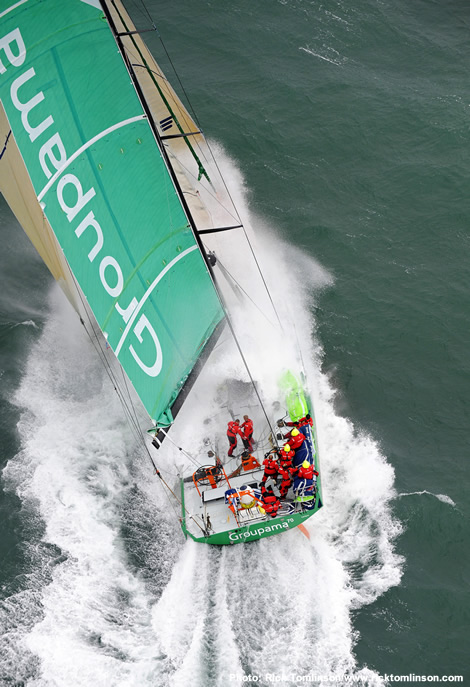









Latest Comments
Add a comment - Members log in